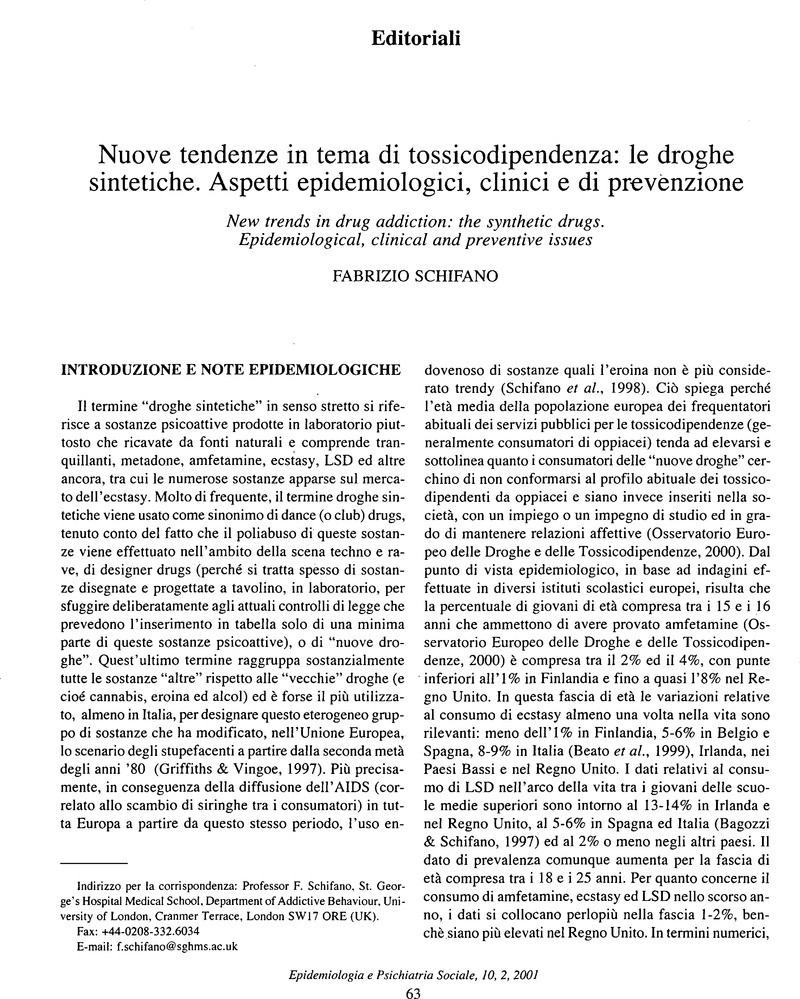Crossref Citations
This article has been cited by the following publications. This list is generated based on data provided by Crossref.
Kobeissy, Firas H.
O'Donoghue, Meghan B.
Golden, Erin C.
Larner, Stephen F.
Zhang, Zhiqun
and
Gold, Mark S.
2006.
Performance Enhancement and Adverse Consequences of MDMA.
Journal of Addictive Diseases,
Vol. 25,
Issue. sup1,
p.
47.
Schifano, Fabrizio
Deluca, Paolo
Baldacchino, Alex
Peltoniemi, Teuvo
Scherbaum, Norbert
Torrens, Marta
Farrě, Magi
Flores, Irene
Rossi, Mariangela
Eastwood, Dorte
Guionnet, Claude
Rawaf, Salman
Agosti, Lisa
Di Furia, Lucia
Brigada, Raffaella
Majava, Aino
Siemann, Holger
Leoni, Mauro
Tomasin, Antonella
Rovetto, Francesco
and
Ghodse, A. Hamid
2006.
Drugs on the web; the Psychonaut 2002 EU project.
Progress in Neuro-Psychopharmacology and Biological Psychiatry,
Vol. 30,
Issue. 4,
p.
640.
Schifano, Fabrizio
Corkery, John
Deluca, Paolo
Oyefeso, Adenekan
and
Ghodse, A. Hamid
2006.
Ecstasy (MDMA, MDA, MDEA, MBDB) consumption, seizures, related offences, prices, dosage levels and deaths in the UK (1994–2003).
Journal of Psychopharmacology,
Vol. 20,
Issue. 3,
p.
456.
Schifano, Fabrizio
and
Corkery, John
2008.
Cocaine/crack cocaine consumption, treatment demand, seizures, related offences, prices, average purity levels and deaths in the UK (1990—2004).
Journal of Psychopharmacology,
Vol. 22,
Issue. 1,
p.
71.
Caloro, Matteo
Calabrò, Giuseppa
Kotzalidis, Georgios D.
Cuomo, Ilaria
Corkery, John M.
Vento, Alessandro Emiliano
Lionetto, Luana
De Filippis, Sergio
Ranieri, Valentina
Lonati, Davide
Locatelli, Carlo Alessandro
de Pisa, Eleonora
Di Tommaso, Antonio
Girardi, Paolo
and
Schifano, Fabrizio
2016.
Use of benzylglycinamide by a HIV-seropositive polysubstance user: The changing pattern of novel psychoactive substance use among youths.
Addictive Behaviors,
Vol. 60,
Issue. ,
p.
53.
Corkery, John M
Claridge, Hugh
Goodair, Christine
and
Schifano, Fabrizio
2017.
An exploratory study of information sources and key findings on UK cocaine-related deaths.
Journal of Psychopharmacology,
Vol. 31,
Issue. 8,
p.
996.



